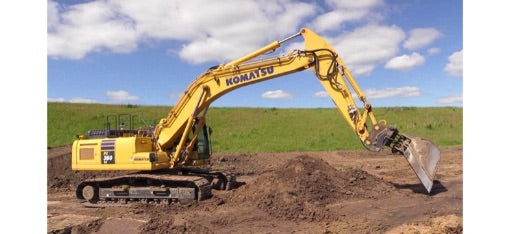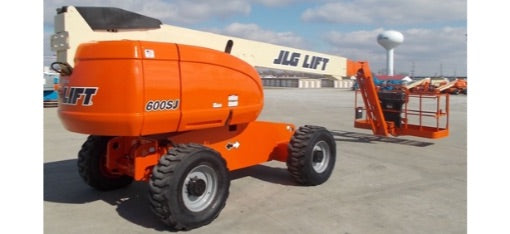Construction equipment is essential for completing construction projects, and the engines in these machines must be kept in top condition to ensure that they run efficiently. One of the most critical maintenance procedures for diesel engines in construction equipment is to maintain the after-treatment system. Sometimes when maintaining the system an forced regen is required. However, too often it is incorrectly assumed that one is needed. In this article, we'll discuss when to perform a forced regen in construction equipment, why Jaltest is the best force regen tool to use, and when not to do a forced regen.
A regen is the process of cleaning the diesel particulate filter (DPF) in a diesel engine. The DPF captures and stores exhaust particulate matter, which can accumulate over time and reduce engine performance. When DPF regeneration occurs it uses high temperatures to burn off the accumulated particulate matter and restore the DPF's functionality. Passive regeneration is when the normal operating temperature of a machine is sufficient to oxidize the particulate matter. When temperatures are not sufficient active regeneration sends fuel to the exhaused area to increase the temperature and oxidization of the particulate matter.
What is a forced regen? A forced regen is when you utilize a diagnostic tool to determine a regen is necessary and initiate a regeneration process on your machine. So, how often should you do a forced regen in construction equipment? A manual regen is not the solution to all of your after-treatment concerns. You first should check the fault codes in your equipment. It could be that another component is the issue or the DPF is needing to be replaced. If you have recently completed a regen forcing another regen is not likely the solution. Check your fault codes, system conditions, measurements and consult expert advice if you are uncertain.
Common signs that your construction equipments after-treatment system may need an inspection include reduced engine power, poor fuel efficiency, or a warning light on the dashboard. It is also possible in some situations that the regen process has be bi-passed to the point that the DPF needs complete replacement or dealer intervention is required.
To perform a forced regeneration, you'll need a diagnostic tool of your own or use a local dealer or service company that has one to perform the regen for you. Typically a regen can cost you $500 to $1000 plus travel time and mileage to complete. Otherwise you will need a diagnostic tool to perform the manual regen. These diagnostic tools are specialized equipment that can initiate a regen sequence and monitor the process.
Jaltest is the best tool to use for performing a forced regen in construction equipment. Jaltest is a diagnostic tool that can diagnose and troubleshoot any problems in your diesel engine, including the need to perform a regen. Jaltest will read the fault codes in your engine, provide live measurements and give you special functions and troubleshooting steps to properly diagnose your after treatment system. Once you determine if you do need to perform a regen Jaltest software has a user-friendly interface that allows you to ensure you are meeting the initial conditions required to initiate a regen easily.
Here's how to do a forced regen with Jaltest:
- Connect the Jaltest diagnostic tool to your equipment's diagnostic port. The location for the port is shown in the Jaltest diagnostic software.
- Check your systems fault codes and perform a necessary diagnosis on the equipment to ensure you do not have faulty components or are needing to replace your DPF.
- Select the special function tab and appropriate engine model and follow the on-screen prompts to ensure you have the appropriate starting conditions and initiate the forced regen sequence.
- The forced regen process will take anywhere from 20 to 60 minutes, depending on the engine model and the amount of soot in the DPF. During this time, you should not turn off the engine or disconnect the Jaltest tool.
- Once the forced regen is complete, Jaltest will provide a report of the process and any errors or issues that were detected.
One of the significant benefits of using Jaltest for forced regens is its ability to monitor the process and detect any issues or errors. This allows you to troubleshoot and fix any problems that may arise during the forced regen, preventing potential engine damage.
However, there are times when you should not do a forced regen. For example, if your equipment's engine is overheating, you should not perform a forced regen. Additionally, if your equipment has any mechanical issues, you should address those issues before performing a forced regen. It is important to also make sure your equipment is clear of any debris when performing a regen.
In conclusion, a forced regen is a critical maintenance procedure for diesel engines in construction equipment. It's essential to perform a forced regen when necessary to restore engine performance, prevent costly repairs and downtime. Jaltest is the best tool to diagnose your system and if a regen is necessary use for performing a forced regen, with its user-friendly interface and diagnostic capabilities.
It is always important to avoid performing a forced regen if your equipment's engine is overheating or if there are any mechanical issues that need to be addressed first. If you're unsure whether your equipment needs a forced regen or how to do a forced regen you can then choose to consult a mechanic or your equipment dealership for assistance. Ultimately, while performing a forced regen yourself is possible with the right tools and knowledge, it's always best to consult an expert if you have any doubts or concerns.
Doing regular preventative maintenance on your construction equipment is essential to ensure its efficiency and longevity. Maintaining your after-treatment system should not be overlooked
Frequently asked Question
How long does a forced regen take? The typical time for a forced regeneration is 20 to 60 minutes








































Leave a comment